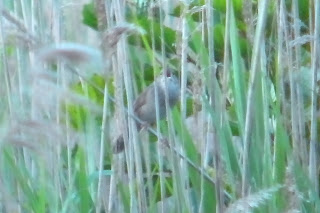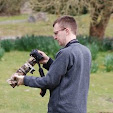 Returned to the scene of last night's Wild Boar sighting in the Forest of Dean this afternoon (see post for 17th July) - plenty of evidence of their presence in the form of rooted up verges and flattened bracken, but no sign of the beasts them
Returned to the scene of last night's Wild Boar sighting in the Forest of Dean this afternoon (see post for 17th July) - plenty of evidence of their presence in the form of rooted up verges and flattened bracken, but no sign of the beasts them selves. Lots of Ringlets (above) out, however, despite the overcast conditions.
selves. Lots of Ringlets (above) out, however, despite the overcast conditions.Then set off home for Dorset with a quick picnic stop on the way at Ham Wall RSPB in Somerset to look for Little Bittern - had to settle for brief flight views though enjoyed much better views of this bat (right) which was roosting on one of the reserve's interpretation signs. I am advised that the large feet and bare face make it a Daubenton's, which fits with the wetland habitat where it was hanging out. No pun intended.










 The climax of a long, hot and happy day came when I joined 50 other eager souls who had waited all week for a chance to see the River Warbler singing from private land in Norfolk. Access was skillfully organised and cheerfully managed by Dick
The climax of a long, hot and happy day came when I joined 50 other eager souls who had waited all week for a chance to see the River Warbler singing from private land in Norfolk. Access was skillfully organised and cheerfully managed by Dick 
 work commitments made an attempt at the more recent Seaforth bird impossible. Matt recently e-mailed me from New Zealand with some good-natured taunting about this, so news of presumably the same bird at Rainham proved too tempting to ignore. Finishing work at 16:30 allowed me to get there by 19:30 and watch this beautiful wader until near dusk. Even in this distant photo, taken in fading light, the striking yellow legs make identification easy.
work commitments made an attempt at the more recent Seaforth bird impossible. Matt recently e-mailed me from New Zealand with some good-natured taunting about this, so news of presumably the same bird at Rainham proved too tempting to ignore. Finishing work at 16:30 allowed me to get there by 19:30 and watch this beautiful wader until near dusk. Even in this distant photo, taken in fading light, the striking yellow legs make identification easy.



